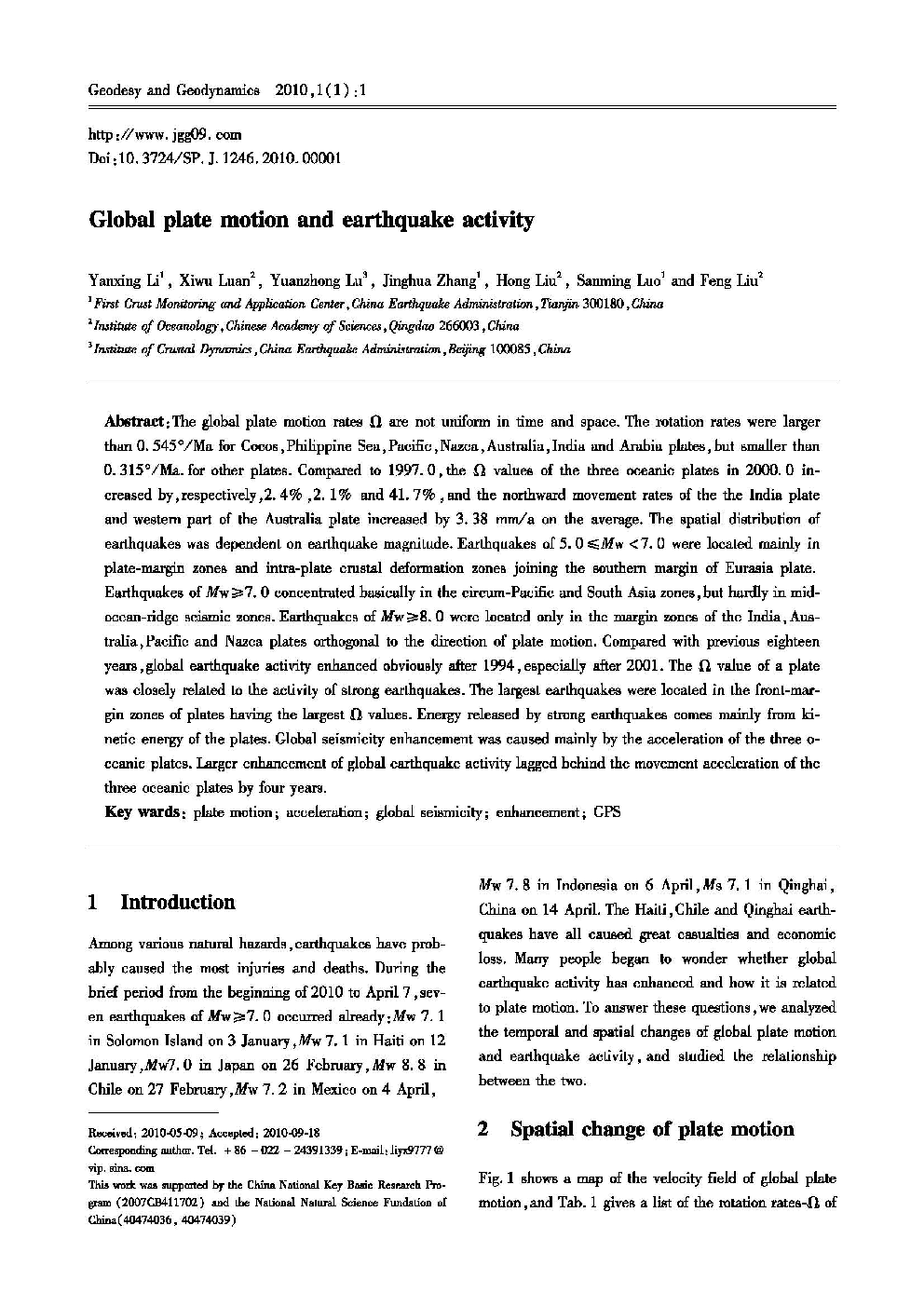| Article ID | Journal | Published Year | Pages | File Type |
|---|---|---|---|---|
| 4683761 | Geodesy and Geodynamics | 2010 | 7 Pages |
:The global plate motion rates Ω are not uniform in time and space. The rotation rates were larger than 0.545°/Ma for Cocos, Philippine Sea, Pacific, Nazca, Australia, India and Arabia plates, but smaller than 0.315°/Ma. for other plates. Compared to 1997.0, the Ω values of the three oceanic plates in 2000.0 increased by, respectively, 2.4%, 2.1% and 41.7%, and the northward movement rates of the the India plate and western part of the Australia plate increased by 3.38 mm/a on the average. The spatial distribution of earthquakes was dependent on earthquake magnitude. Earthquakes of 5.0 ≤ Mw < 7.0 were located mainly in plate-margin zones and intra-plate crustal deformation zones joining the southern margin of Eurasia plate. Earthquakes of Mw ≥ 7.0 concentrated basically in the circum-Pacific and South Asia zones, but hardly in mid-ocean-ridge seismic zones. Earthquakes of Mw ≥ 8.0 were located only in the margin zones of the India, Australia, Pacific and Nazca plates orthogonal to the direction of plate motion. Compared with previous eighteen years, global earthquake activity enhanced obviously after 1994, especially after 2001. The Ω value of a plate was closely related to the activity of strong earthquakes. The largest earthquakes were located in the front-margin zones of plates having the largest Ω values. Energy released by strong earthquakes comes mainly from kinetic energy of the plates. Global seismicity enhancement was caused mainly by the acceleration of the three oceanic plates. Larger enhancement of global earthquake activity lagged behind the movement acceleration of the three oceanic plates by four years.
